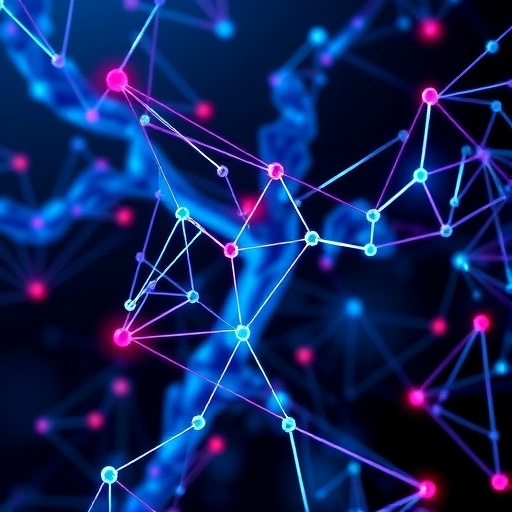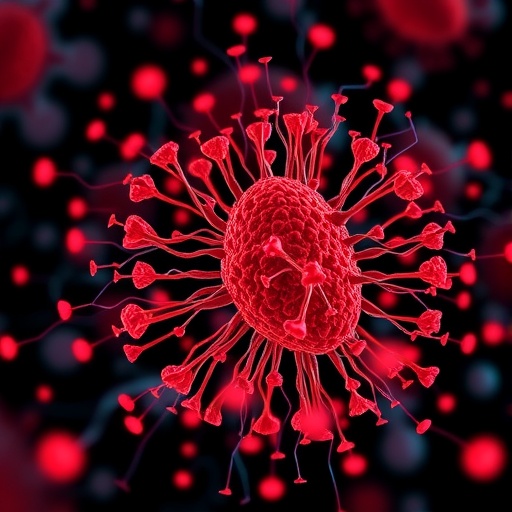In a groundbreaking advance that promises to revolutionize molecular science, a team of interdisciplinary researchers has unveiled a novel approach to molecular representation learning, one that expertly navigates the pervasive challenge of imperfectly annotated data. Published in Nature Communications in 2025, this new methodology transcends traditional graph-based models by adopting a hypergraph perspective, unlocking unprecedented insights into molecular structures while ensuring enhanced explainability—an attribute critical for both scientific rigor and practical applications.
At the core of this breakthrough lies the pressing need to grapple with the imperfection inherent in molecular datasets. Laboratory annotations are often incomplete, noisy, or ambiguous, stemming from experimental complexities and human error. Conventional molecular machine learning models struggle to maintain accuracy in such scenarios, as they rely heavily on clean, well-curated data to learn meaningful representations. The innovative unified framework presented by Wang, Li, Zhou, and collaborators circumvents these limitations by modeling molecules not merely as simple graphs, but as hypergraphs, where multi-way relationships are explicitly captured, enriching the structural context immensely.
A hypergraph expands upon the classical graph paradigm by enabling edges—called hyperedges—to connect multiple nodes simultaneously. This architectural sophistication mirrors the multifaceted nature of molecular interactions more faithfully than pairwise connections alone. Within molecules, atoms engage in complex interactions that extend beyond direct bonds, including resonance, conjugation, and spatial configurations that influence chemical properties. By formulating molecular structures as hypergraphs, this approach encapsulates these higher-order interactions directly into the learning model, thereby enhancing its representational power and robustness.
However, hypergraph models are notoriously challenging to design and interpret, which historically hampered their adoption in chemistry and related fields. The researchers resolved this by devising an explainable learning strategy that demystifies the decision-making processes of the model. Their unified framework meticulously integrates explainability mechanisms, such as attention-based modules and interpretable latent factors, that illuminate the underlying molecular features driving predictions. This transparency not only bridges the gap between data-driven algorithms and domain expertise but also cultivates trust among chemists and pharmacologists who mandate actionable insights over ‘black-box’ outputs.
To tackle imperfect annotations, the framework employs innovative noise-tolerant learning techniques that identify and mitigate the influence of erroneous labels. These methods dynamically weigh data points based on reliability estimates, allowing the model to focus on high-confidence regions of the dataset while still leveraging the broader context provided by less certain annotations. This intelligent approach substantially elevates the generalizability and practical utility of molecular representations when applied to real-world datasets that are often messy and incomplete.
The implications of this unified hypergraph-based representation learning extend far beyond academic curiosity. Drug discovery pipelines stand to benefit immensely, as predictive models for molecular properties and bioactivity can achieve heightened accuracy even when datasets are compromised by annotation flaws. This efficiency translates to faster candidate screening, reduced experimental costs, and enhanced identification of viable therapeutic compounds, thereby accelerating the journey from bench to bedside.
Moreover, materials science could harness this methodology to accelerate the design and characterization of novel compounds with tailored properties. Understanding complex molecular structures, especially polymers and crystalline materials, involves multi-faceted interactions well captured by hypergraph models. Coupled with explainability, researchers can pinpoint critical structural motifs responsible for desired functionalities, providing a powerful tool for rational material design.
The study also advances the dialogue on trustworthiness in artificial intelligence applied to scientific domains. Explainable molecular models quell skepticism by furnishing explicit rationales for their outputs, thus aligning computational predictions with human interpretability. This fosters collaboration between AI specialists and domain experts, amplifying innovation and enabling the integration of algorithmic insights into experimental workflows in a seamless manner.
Furthermore, adopting the hypergraph perspective represents a conceptual leap, inviting the research community to rethink classical assumptions about molecular modeling. Incorporating multi-way atomic interactions invites new theoretical developments and computational strategies, potentially spawning a new class of algorithms optimized for hypergraph-structured data. This paradigm shift could ripple across chemistry, biology, and related fields that depend on complex relational data, ushering in a transformative era for data-driven molecular science.
The authors’ detailed experimental evaluation demonstrates the superior performance of their approach across multiple benchmark molecular datasets, verifying its robustness in diverse scenarios. By systematically comparing against traditional graph-based models and alternative noise-handling strategies, the research provides compelling evidence that hypergraph representations combined with explainability and noise-tolerance yield a holistic improvement in molecular learning outcomes.
Importantly, the framework’s modular design ensures adaptability and extensibility, allowing future researchers to incorporate domain-specific knowledge, additional data modalities, or advanced neural architectures to further boost performance. This flexibility is crucial as molecular datasets continue to grow in complexity and scale, requiring methods that can evolve alongside emerging challenges and opportunities.
The publication arrives at a critical juncture, as molecular machine learning has become an indispensable pillar underpinning modern chemistry, biology, and medicine. The interplay of deep learning, big data, and intricate molecular structures demands methods that not only excel in predictive power but also offer interpretability and resilience to imperfect real-world data. The work spearheaded by Wang and colleagues sets a new standard that harmonizes these needs within a coherent and scientifically principled framework.
Looking ahead, this innovative approach could catalyze the development of next-generation computational tools that blend the best of mathematical rigor, algorithmic ingenuity, and chemical intuition. The prospect of automated, explainable molecular design engines that operate reliably amid uncertainty is tantalizing, promising to reshape the landscape of biomedical research, materials innovation, and beyond.
As the scientific community digests these insights, the study’s impact will likely extend well beyond its immediate contributions, inspiring analogous methodologies in other domains where relational data and annotation imperfections pose enduring challenges. The conceptual clarity and empirical robustness of the hypergraph-based, explainable molecular representation learning thus portend a broad and lasting legacy.
In conclusion, the work by Wang, Li, Zhou, and their collaborators represents a monumental stride in molecular informatics. By embracing the complexity of molecular architectures through hypergraphs and marrying this with noise-aware and explainable machine learning, this research opens new frontiers for understanding and engineering the molecular fabric of our world. It is a vivid reminder that innovation often arises from reimagining established frameworks and daring to integrate interpretability with computational power—a combination destined to accelerate discovery in the molecular sciences for years to come.
Subject of Research: Molecular representation learning using hypergraph-based models to handle imperfectly annotated data, with a focus on explainability and noise robustness.
Article Title: Unified and explainable molecular representation learning for imperfectly annotated data from the hypergraph view.
Article References:
Wang, B., Li, J., Zhou, D. et al. Unified and explainable molecular representation learning for imperfectly annotated data from the hypergraph view. Nat Commun 16, 8717 (2025). https://doi.org/10.1038/s41467-025-63730-6
Image Credits: AI Generated
Tags: addressing noisy and ambiguous data in scienceadvancements in machine learning for chemistryenhancing accuracy in molecular datasetsexplainability in molecular modelshypergraph perspective in molecular sciencehypergraphs versus traditional graphsinterdisciplinary research in molecular learningmolecular representation learningmulti-way relationships in molecular structuresNature Communications publication 2025novel methodologies in molecular scienceovercoming imperfect molecular data





